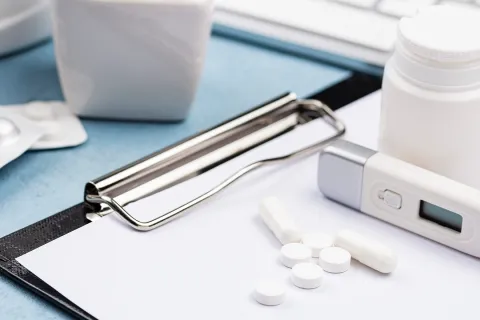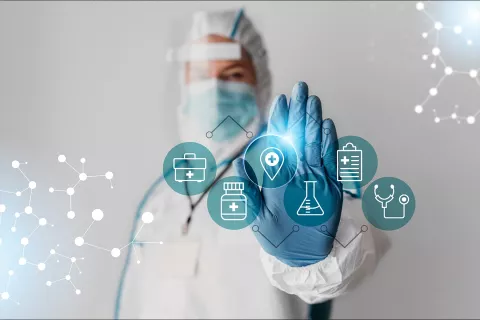
In the dynamic world of pharmaceuticals, drug safety has always been a moving target. From thalidomide tragedies in the 1960s to today’s mRNA vaccines, the need for robust pharmacovigilance systems has only intensified. At the heart of this evolution lies aggregate safety reporting—a practice transforming from rudimentary data collection to a sophisticated, proactive safeguard for global public health. Let’s explore how these reports have shaped drug safety and why they remain indispensable in modern Regulatory compliance.
From Reactive to Proactive: A Historical Shift
In the early days of pharmacovigilance, safety monitoring focused on individual case reports of adverse events. While critical, this reactive approach often misses broader patterns. The 1990s marked a turning point with the International Council for Harmonisation (ICH) introducing guidelines like E2C for Periodic Safety Update Reports (PSURs), which mandated systematic reviews of cumulative safety data.
By the 2000s, regulators recognized the limitations of siloed data. The EU’s Periodic Safety Update Report (PSUR) and the US’s Periodic Adverse Drug Experience Report (PADER) emerged, requiring manufacturers to submit safety summaries at fixed intervals. However, inconsistencies in format and analysis persisted across regions.
The real game-changer arrived in 2012 with the ICH E2C(R2) guideline, which replaced PSURs with the Periodic Benefit-Risk Evaluation Report (PBRER). This shifted the focus from mere adverse event tallies to a holistic benefit-risk assessment. For the first time, companies had to justify a drug’s continued use by weighing its therapeutic benefits against identified risks—a paradigm that remains central today.
Key Milestones in Aggregate Reporting
1. Harmonization Through ICH Guidelines
The ICH’s Development Safety Update Report (DSUR) streamlined pre-approval safety reporting by replacing region-specific documents like the EU’s Annual Safety Report (ASR) and the US’s IND annual report. This harmonization reduced redundancy and improved global data consistency.
2. Rise of Risk Management Plans (RMPs)
Post-2010, Regulatory agencies began mandating Risk Management Plans to accompany aggregate reports. These documents outline strategies for monitoring and mitigating risks, ensuring proactive safety management throughout a drug’s lifecycle.
3. Technology-Driven Efficiency
Traditional aggregate safety reporting relied on manual data compilation—a time-consuming process prone to errors. Today, platforms automate report generation, enabling real-time data integration from clinical trials, spontaneous reports, and literature. This shift has slashed submission timelines while improving accuracy.
Modern Aggregate Reports: Types and Purpose
| Report Type | Phase | Key Objective |
| DSUR | Clinical Trials | Annual safety updates for investigational drugs |
| PBRER/PSUR | Post-Marketing | Benefit-risk evaluation for marketed drugs |
| PADER | US Post-Marketing | Quarterly/annual summaries of adverse drug experiences |
| Addendum Reports | Ad-Hoc | Responses to specific Regulatory queries |
These reports now prioritize signal detection, trend analysis, and risk minimization over passive data aggregation. For instance, the EU’s Pharmacovigilance Risk Assessment Committee (PRAC) relies heavily on PBRERs to recommend label updates or restrictions.
Challenges and Innovations
Despite advancements, challenges persist:
- Data Volume: With real-world evidence (RWE) and patient registries contributing to safety databases, managing “big data” requires AI-driven analytics.
- Regulatory Divergence: While the ICH promotes harmonization, countries like Japan and Brazil retain unique reporting requirements, complicating global submissions.
- Timeliness: Missing deadlines risks non-compliance fines. Automated tracking tools now alert teams to upcoming submissions, reducing delays.
Innovations like structured benefit-risk frameworks and patient-centric reporting (incorporating patient-reported outcomes) are shaping the next frontier.
The Future: Predictive Analytics and Global Collaboration
Emerging technologies promise to revolutionize aggregate reporting:
- Machine Learning: Predictive models can flag potential safety issues before they escalate, transforming reports from historical records to early-warning systems.
- Blockchain: Secure, decentralized data sharing could enhance transparency between regulators and manufacturers.
- Integrated Platforms: Tools like Freyr’s aggregate reporting services centralize data management, enabling seamless report authoring and submission.
Regulators are also pushing for simplified periodic reports and shared safety databases to reduce industry burden while enhancing public access to safety data.
Why Partner with Experts?
Crafting compliant aggregate reports demands expertise in:
- ICH Guidelines: Navigating E2E, E2C(R2), and regional addendums.
- Data Synthesis: Transforming raw data into actionable insights.
- Submission Logistics: Adhering to eCTD formats and electronic submission mandates.
At Freyr, we combine decades of Regulatory experience with cutting-edge tools to deliver:
- End-to-End Services: From DSURs to ad-hoc reports, we handle authoring, review, and submission.
- Risk Mitigation: Proactive compliance monitoring to avoid costly delays.
- Custom Solutions: Tailored strategies for orphan drugs, biologics, and combination products.
The evolution of aggregate safety reports mirrors pharmacovigilance’s journey from a reactive checklist to a strategic pillar of drug development. As regulations tighten and technologies advance, partnering with experts ensures Regulatory compliance and a competitive edge in safeguarding patient health.
Stay ahead of the curve. Let us transform your safety data into Regulatory success.









